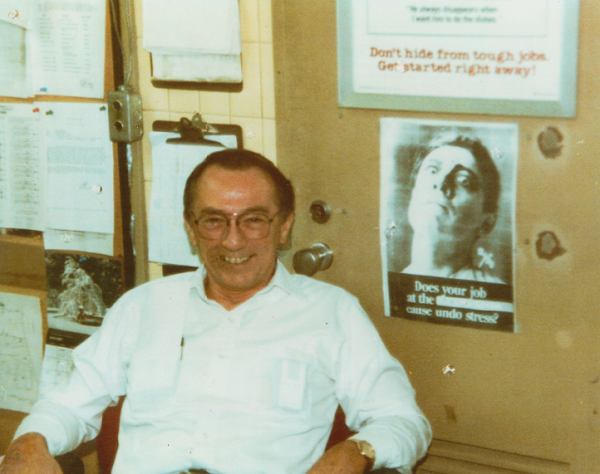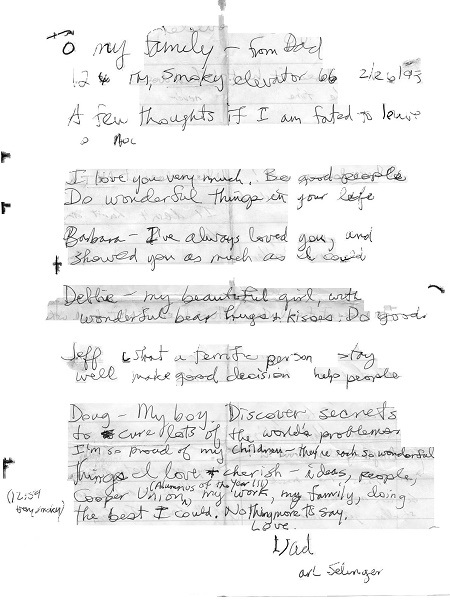Celebrating Artist Peter Ruta’s 100th Birthday
On the morning of Sept. 11, 2001, artist Peter Ruta was on a Metro North train bound for New York City, intending to return to his studio on the 91st floor of the North Tower of the World Trade Center. At the last minute, he had extended a family vacation on Cape Cod, a decision that likely spared his life that fateful Tuesday. The cityscape he had been painting in his North Tower studio was destroyed when the buildings collapsed.
Before 9/11, the artist had dedicated his career to painting his creative muse, the skyline of New York City. In 1970, Ruta moved into the West Village’s Westbeth Artists Housing complex, the former Bell Telephone Laboratories building that architect Richard Meier had recently converted into 400 subsidized housing and studio spaces for visual artists.
Almost daily, Ruta would set up his easel on the roof of his studio and paint from direct observation. Over the years, he observed and captured the construction of the World Trade Center, the rising forms of the Twin Towers and the reconfiguration of lower Manhattan caused by the arrival of this new complex.
Ruta’s main interest was in capturing the play of light and shadow cast on the city’s infrastructure as well as its ever-evolving skyline. Despite the city’s population density and animated public spaces, the artist removed human activity from his landscapes to focus on the geometry of Manhattan’s architecture and street grid system.
In 2000, artist Peter Ruta was awarded work space on the 91st floor of the North Tower as a special participant in the Lower Manhattan Cultural Council’s Studiospace program. At age 82, he was the oldest participant in that artist residency program, which took advantage of temporarily unleased office space. His studio in the sky presented him with novel panoramic views of Manhattan and spurred the creation of a new series of works.
Born in Germany, Ruta’s parents had emigrated to Italy in fear of the rising anti-Semitism in their home country. At age 18, Ruta moved to the United States alone, leaving behind his family. He was drafted into the war in 1942 as a division artist for the Indiana National Guard. After only one week, Ruta asked to fight in a combat position, motivated by the predicament of his family still residing in Italy. While fighting in the Philippines in 1945, he was shot four times in the abdomen. After recovering from his injury and receiving a discharge from continued military service, Ruta saw an opportunity for a second lease on life. That pursuit would be focused on the creation of his art and establishing himself as a professional painter.
Ruta’s career spanned many decades, continents and themes. Still painting until his final days, the artist passed away in 2016 at age 98. He would have been 100 years old on Feb. 7, 2018.
Ruta’s 1979 painting Untitled – a view of the downtown skyline looking south from his West Village rooftop, dominated by the Twin Towers – is in the 9/11 Memorial Museum’s permanent collection. The artwork was presented to the Museum as a gift from the artist, commemorating a conspicuous landmark that had risen before his eyes and engaged him visually for almost three decades.
By Emily Edwards, Collections and Exhibitions Coordinator, 9/11 Memorial Museum
Previous Post
Remembering 1993 Victim Robert Kirkpatrick

To commemorate the 25th anniversary of the first attack on the World Trade Center on Feb. 26, 1993, the 9/11 Memorial & Museum will be highlighting the stories of victims, survivors and artifacts related to the bombing and the subsequent investigation.
Next Post
Carl Selinger’s Heartfelt Letter Tells His Loved Ones to “Be Good People”

On the cold winter morning of Feb. 26, 1993, Carl Selinger headed to work at the World Trade Center where he was employed by the Port Authority as the manager of business development for the aviation department.